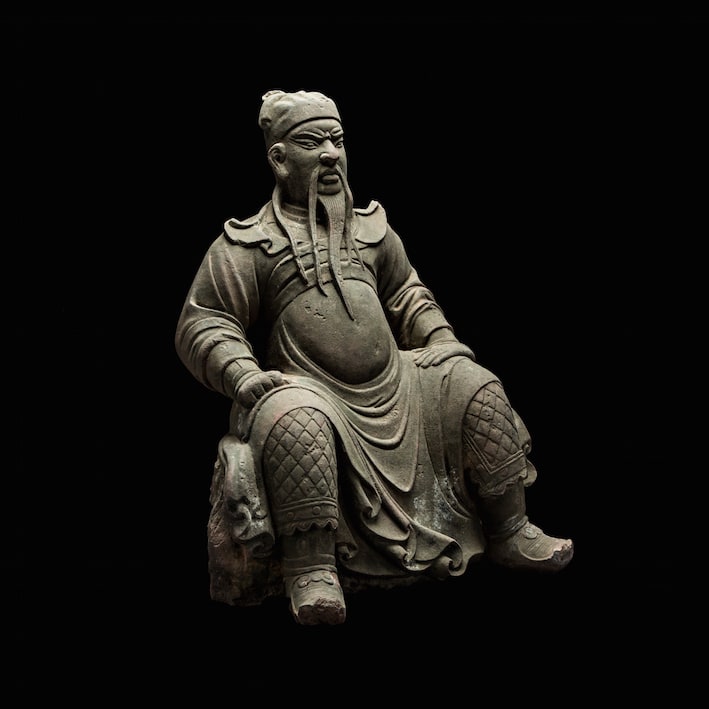Ming Dynasty Stone Sculpture of Guan Yu, 1368 CE - 1644 CE
Stone
59.4 x 47 cm
23 3/8 x 18 1/2 in
23 3/8 x 18 1/2 in
FF.058
Further images
Guan Yu was a historical figure who lived during the end of the Eastern Han Dynasty and the Three Kingdoms Era (late second-early third century AD). Serving as a general...
Guan Yu was a historical figure who lived during the end of the Eastern Han Dynasty and the Three Kingdoms Era (late second-early third century AD). Serving as a general under the warlord Liu Bei, he became famous for his military skills and personal integrity. Over the centuries fact and fiction merged and he became a legendary figure in Chinese folklore. The greatest celebration of his virtues appeared in the fourteenth-century historical novel, the ‘Romance of the Three Kingdoms,’ and by the end of the Sui Dynasty he had been deified. Guan Yu has been honoured by many different religious groups in China ; in Buddhism he is revered as a bodhisattva, in Taoism he is regarded as a guardian deity and even today he is still worshipped as an indigenous Chinese deity. Successive Ming emperors claimed that the spirit of Guan Yu helped them achieve success in battle and it was during this period that he acquired several honorific titles, including that of 'Emperor.'
This remarkable stone sculpture is a testament to the popularity of Guan Yu during the Ming era. Resting on a rocky mound, the general sits with his legs wide apart in a gesture of invincibility. His right hand is tightly clenched and his left rests on his thigh, pointing inwards at a sharp angle. The drapery has been finely carved, especially the wide collar and the folds beneath his rotund belly. The fabric has been hitched up to knee level so that the details of the armour beneath and the intricately modeled shoes are evident. A long flowing beard and moustache, Guan Yu’s most defining characteristics, hang down over the chest. The facial expression, especially the furrowed brow, is the highlight of this sculpture, capturing the determination that led to his military success. The folded cap, knotted at the reverse, is also customary. Although the stone surface is now exposed, it is possible that the sculpture was once polychromed. Guan Yu was famous for his red face and green robe, worn over his body armour. (AM)
This remarkable stone sculpture is a testament to the popularity of Guan Yu during the Ming era. Resting on a rocky mound, the general sits with his legs wide apart in a gesture of invincibility. His right hand is tightly clenched and his left rests on his thigh, pointing inwards at a sharp angle. The drapery has been finely carved, especially the wide collar and the folds beneath his rotund belly. The fabric has been hitched up to knee level so that the details of the armour beneath and the intricately modeled shoes are evident. A long flowing beard and moustache, Guan Yu’s most defining characteristics, hang down over the chest. The facial expression, especially the furrowed brow, is the highlight of this sculpture, capturing the determination that led to his military success. The folded cap, knotted at the reverse, is also customary. Although the stone surface is now exposed, it is possible that the sculpture was once polychromed. Guan Yu was famous for his red face and green robe, worn over his body armour. (AM)





